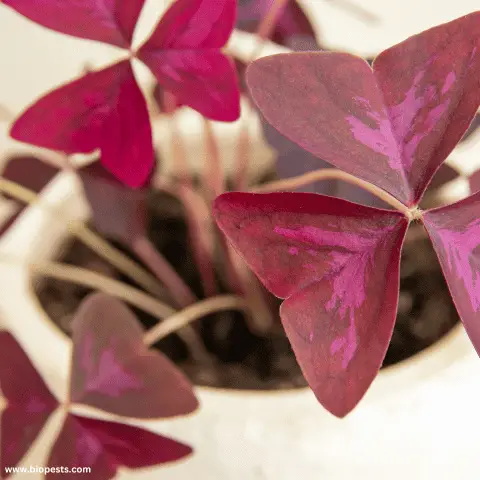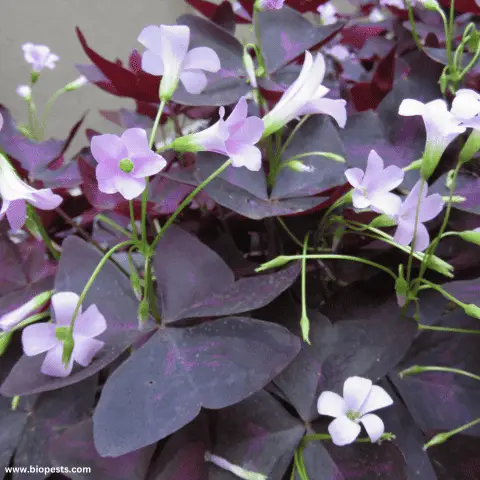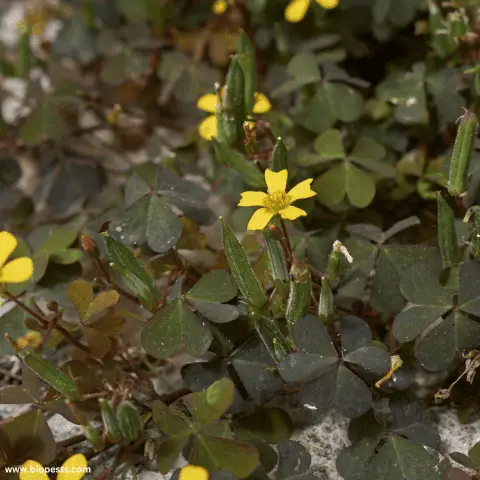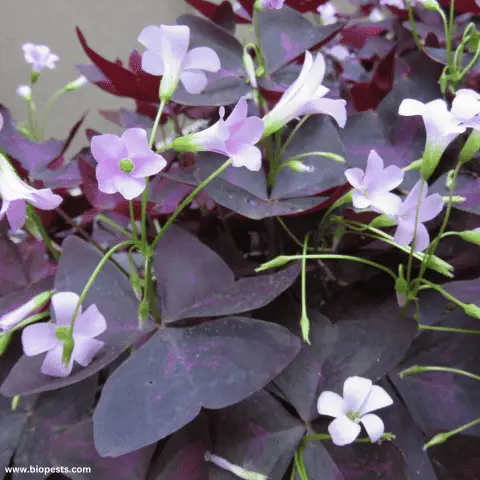Decorating your home can be a fun and rewarding experience. Adding a plant or two is one way to brighten up any room. However, not all plants are low maintenance and easy to care for. If you’re looking for an affordable and attractive plant that can survive with limited natural light, look no further than the Oxalis plant.
This versatile plant has uniquely shaped and colorful leaves and fragrant flowers and is great for improving air quality in your home. This blog post will explore the benefits of owning an Oxalis plant and why it’s a great choice for any homeowner.
Benefits Of The Oxalis Plant
The Oxalis plant is a low-maintenance and easy-to-care-for plant. It does not require much watering or direct sunlight, making it an ideal plant for busy homeowners. This plant can thrive in most soil types and only requires occasional fertilization. It’s also pest resistant, so you don’t have to worry about it being eaten by insects.
The Leaves Of The Oxalis Plant Are Uniquely Shaped And Colorful
One of the most attractive features of the Oxalis plant is its uniquely shaped and colorful leaves. The leaves come in various shades, from deep purple to bright green. The leaves also have a distinct clover shape, adding to their charm. You can place an Oxalis plant in any room, and it will add a pop of color and excitement.

The Oxalis Plant Improves The Air Quality in Your Home
The Oxalis plant is great for improving air quality in your home. It is a natural air purifier, and its foliage can help remove harmful chemicals and pollutants from the air. This can greatly benefit those with allergies or respiratory problems. The plant also releases oxygen, making it a great choice for bedrooms or other areas where you spend a lot of time.
The Oxalis Plant has Fragrant Flowers.
In addition to its uniquely shaped and colorful leaves, the Oxalis plant also produces fragrant flowers. The flowers come in a variety of colors, from pink to white, and are delightfully scented. You can place an Oxalis plant in a living room or bedroom and enjoy the sweet fragrance that fills the air.
An affordable way to Brighten up Any Room
The Oxalis plant is a great choice if you’re on a tight budget and looking for an affordable way to brighten up any room. It’s easy to find at most garden centers and is relatively inexpensive. You can buy multiple plants and place them in different rooms, creating a cohesive and attractive decor theme.

The Oxalis Plant Can Survive with Limited Natural Light
The Oxalis plant is also great for those with limited natural light. It only requires a few hours of indirect sunlight daily, making it perfect for apartments or homes with small windows. You can place your Oxalis plant in a corner or on a bookshelf, and it will thrive with minimum effort.
Common Diseases Of The Oxalis Plant
Oxalis is a genus of flowering plants that includes about 800 species worldwide. Given its far-reaching presence, it’s not surprising that you can find Oxalis with different colors, sizes, and shapes.
One of the biggest challenges that people face is keeping their plants healthy. Oxalis plants aren’t immune to illnesses, and there are several diseases that you should be aware of, including:
Rhizoctonia root rot in Oxalis plants
Rhizoctonia is a common fungal disease that infects the plant’s roots, causing the leaves to wilt and eventually fall off. This disease spreads from soil to soil, so it’s essential to avoid planting new Oxalis plants in infected soil.
Rhizoctonia Root Rot occurs when oxalis plants are exposed to a soil that is too moist, has poor drainage, and is high in nutrients, resulting in stress on the roots and favoring fungal growth. The fungus spreads quickly in warm and humid conditions, so indoor gardeners should be more mindful of when and how much they water their oxalis.
Symptoms:
Rhizoctonia Root Rot symptoms include brown or black discoloration of roots, stunted plant growth, reduced leaf size and discoloration, and wilting. Sometimes, these symptoms can be confused with underwatering, so it’s essential to determine the root cause of the symptoms before treating it.
Diagnosis:
The easiest way to diagnose Rhizoctonia Root Rot is to observe the roots. The disease is likely present if they have a brown or black discoloration and smell bad. However, you can get a soil test and laboratory diagnosis for more severe cases to help you get a more accurate diagnosis.
Treatment:
If detected early enough, Rhizoctonia Root Rot can be stopped before it affects the entire plant. However, if left untreated, it can quickly kill your oxalis. One of the primary causes of infection is overwatering, so ensure the proper drainage of your plants and reduce the watering frequency. Additionally, adequately remove any affected parts of your oxalis and treat the area with a fungicide.
Prevention:
The best way to prevent Rhizoctonia Root Rot is to ensure that you plant your oxalis in well-drained soil, allow the soil to dry appropriately before watering your plant, and avoid water pooling in the pot. You can also add a layer of sand to improve the drainage of your soil and reduce the risk of overwatering your oxalis.

Powdery mildew In Oxalis plants
Powdery Mildew is one of the most prevalent diseases in Oxalis plants. It affects the leaves, stems, and flowers of the plant. It appears as a white or gray powdery coating on the surfaces of the plant. This fungus thrives in warm, humid conditions and spreads quickly in poorly ventilated areas, shade, or damp environments. Powdery mildew isn’t picky about the plants it infects and will happily grow on any species of Oxalis plant.
Signs of Powdery Mildew in Oxalis Plants
Signs of powdery mildew on Oxalis plants include small white spots on the leaves, dark spots, yellowing leaves, stunted growth, and a white powdery coating on the leaves. If you are unsure whether your Oxalis plant has powdery mildew, look for these signs as a starting point.

Prevention and Control of Powdery Mildew
Preventing powdery mildew is always better than controlling it, and there are several measures you can take to keep your Oxalis plants healthy. Firstly, ensure adequate ventilation around your plants. Increase spacing between plants if necessary and prune the dense vegetation. Fertilize your plants to keep them strong and healthy. Water your plants in the morning to avoid moisture lingering in the evening. If needed, spray your plants with neem oil or a fungicide. Always follow the instructions on the label and observe the recommended waiting times before harvesting your plants.
How to Treat Powdery Mildew in Oxalis Plants
Treating powdery mildew is relatively easy once detected. Gently wipe the white powdery coat away, and spray the plant with a fungicide or neem oil. Some home remedies might include sprinkling baking soda on the plants or spraying a mix of milk and water solution to stop the spread of the disease. Be careful, though, as their effectiveness is limited. The best way to manage the powdery mildew is to use the spray solutions recommended by your local nursery or use a fungicide product. If left untreated, the fungus will continue to spread throughout the plant and beyond, resulting in plant deformation, reduced yield, and potential death.
Botrytis Blight In Oxalis Plants
Botrytis is a fungal disease that attacks and weakens the leaves of the Oxalis plant. It thrives in damp conditions, so keeping your plants in well-ventilated areas is crucial and ensuring soil or peat moss is not too soggy.
Symptoms of Botrytis blight in Oxalis plants:
Botrytis blight symptoms can be observed in several parts of the plant. The most commonly affected parts of the plant are the flowers. Infected flowers will turn brown or gray, and you may observe a soft, fuzzy mold growing over the surface of the flowers. The leaves and stems can also be infected, causing them to wilt and turn brown. If you notice any of these symptoms, it may be a sign that your Oxalis plant is infected with Botrytis blight.
Prevention of Botrytis blight in Oxalis plants:
Prevention is the key to avoiding Botrytis blight in Oxalis plants. One of the most common ways the disease spreads is through water splashing on the foliage. You should water your plants in the morning to allow time for the leaves to dry out before evening. It is also essential to avoid overcrowding of plants in a humid environment. Ensure your Oxalis plant has proper air circulation and is not placed too close to other plants. Disinfecting pruners and shears before pruning can also help to prevent botrytis from spreading throughout your Oxalis plant.
Treatment of Botrytis blight in Oxalis plants:
The best treatment for Botrytis blight is prevention, but if your plant is infected, there are still some things you can try to save your plant. The first thing to do is remove all infected parts of the plant and discard them in the trash. Do not compost infected plant material, as the fungus can survive and spread. You can also apply an organic or chemical fungicide to help control the spread of the disease. Be sure to follow the directions on the package, as overuse can lead to other problems.
Recovery
After treatment, giving your Oxalis plant proper care is essential to help it recover. Monitor the plant regularly and avoid overwatering to prevent conditions promoting Botrytis blight growth. If your Oxalis plant is severely infected, it may not fully recover, and you may have to consider replacing it.
Alternaria Leaf Spot In Oxalis Plants
Alternaria leaf spot is a fungal infection that primarily attacks plants in the Oxalis family. It’s characterized by dark, round spots on your plant’s leaves, usually starting at the bottom and working their way up. As the infection spreads, the spots become larger, slightly raised, and eventually turn brown. If left untreated, the leaves will wilt and fall off, and the infection may even spread to other plants in the area.
Identifying Alternaria Leaf Spot In Oxalis Plants
The first step in treating Alternaria leaf spots is to be able to identify them. The spots are dark brown or black and are circular, measuring about 3-6mm in diameter. They are usually found on the lower leaves of your Oxalis plant but can spread all over if left untreated. You may also notice a fuzzy growth on the back of the leaves when the infection is severe.

Preventing Alternaria Leaf Spot in Oxalis Plants
Prevention is always better than cure, especially regarding Alternaria leaf spot. The best way to prevent the infection is to keep your plant as healthy as possible by providing proper care. Water your plant deeply but avoid letting the soil sit in too much standing water. Make sure your plant has enough sunlight and is planted in well-draining soil. Also, try not to overcrowd your plants, as this can create a humid environment in that fungi thrive.
Treating Alternaria Leaf Spot in Oxalis Plants
If you notice Alternaria leaf spots on your Oxalis plant, the first step is to remove and dispose of the affected leaves immediately. Make sure to clean your tools and hands thoroughly after handling the infected leaves to avoid spreading the fungus. You can also apply a fungicide to the remaining leaves to prevent further spread. Several options are available on the market; I would recommend this one.
Final Thoughts on Oxalis Diseases
In conclusion, the Oxalis plant is an easy and affordable way to add life to your home. It’s low-maintenance, has uniquely shaped and colorful leaves, fragrant flowers, and is great for improving air quality. Although Oxalis diseases can be difficult to control, you can take preventative measures to preserve your plant’s health. Getting into good gardening habits, such as watering your plants adequately, keeping your planting area clean, and disposing of diseased leaves, can help. While prevention is always better than cure, treating diseases as soon as you notice them is essential. So, watch for any symptoms and act fast if you spot anything amiss!
Some of the links above are affiliate links, meaning at no additional cost to you, I will earn a commission if you click through and make a purchase.


